Found in the Fells – April
Spring is now in full development
with new life showing everywhere. More change occurs in the Fells
woods
during April than one might realize. At the beginning
of the month there are buds on just about every
woody plant, and by month's end several will be leafing out.
Woody
plants have of
course a big advantage in that they don’t have to start from
scratch. In fact on warm days going back to February the sap has been
running, making
the buds fatter, and now several species of tree will blossom
this
month.
These are not the layman's 'flowers' with petals, but the
florescence of the Red Maple and Pussy Willow, and the dangling catkins
of birch and alder are quite attractive, and all in bloom in the Fells
in April.
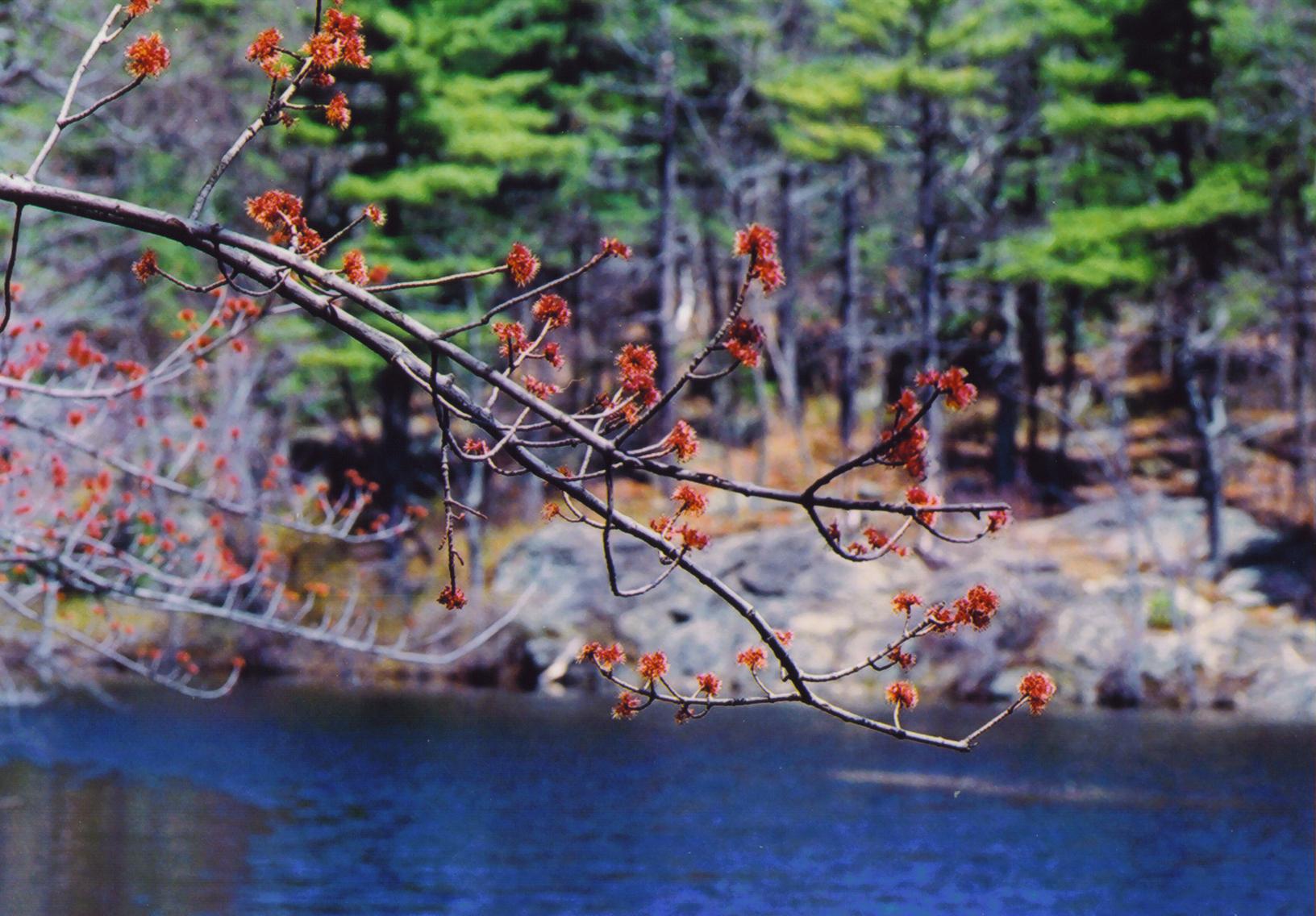
Red Maple in flower at Long Pond,
At ground level, stream banks are where most greenery is to be
found in early April as various water-loving plants get a
head-start because of the relative warmth of the water compared with
the still cold ground. Look for the bright green shoots of Indian
Poke,
Veratrum viride, with their
beautiful ribbing, and the round leaves of Marsh Marigold.
Suddenly it seems we're aware of birds everywhere with both dawn and evening chorus. The cute Nuthatch is running up and down trees and swooping from one to another; and robins will strut along the trail in front of you.
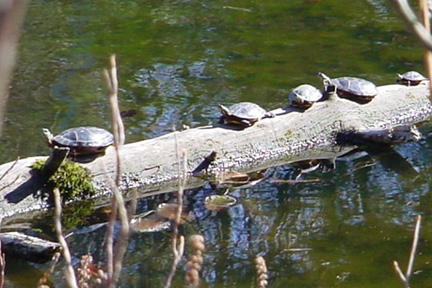
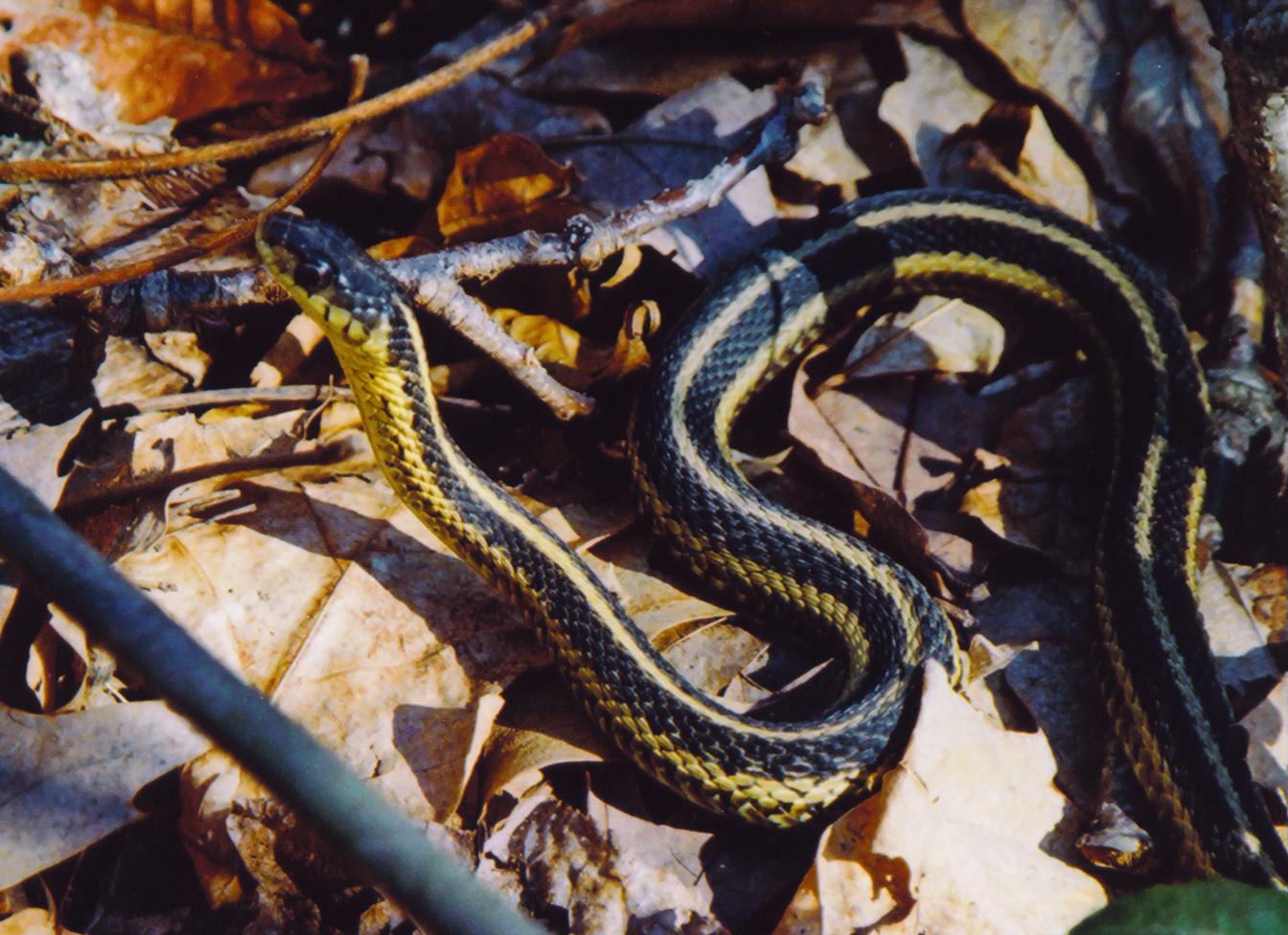 Painted
turtles sunning at Long Pond
4-02-06
Garter
snake Thamnophis sirtalis 4-03-05
Painted
turtles sunning at Long Pond
4-02-06
Garter
snake Thamnophis sirtalis 4-03-05
photo: Anne Hamlin
The 'quacks' from vernal pools can have you looking for ducks, but it will probably be the call of wood frogs early in the month, and by month's end many tadpoles to be seen wriggling near the pools' edges. And remember the Salamanders congressing at the end of March? You can now see blobs of eggs lying on the brown leaves at the bottom of vernal pools.
And not only are amphibians about but reptiles as well, choosing any sunny day to warm up their blood and get going. Garter snakes are very common. But don't worry - they are not poisonous.
Then by mid-month in some parts of the Fells - certainly Virginia Wood and near Bellevue Pond - comes a true beauty, one of the early spring ephemerals, Bloodroot, so called because the root, if cut, bleeds red. This delicate white-petaled flower with deep yellow anthers stands wrapped in its 'quilted' blanket of leaves on a frosty morning waiting for the sun to warm up before it opens. Another early beauty is Round-leaved Hepatica, sadly not very common in the Fells but it can be found on the south slope of Bear Hill. These flowers are termed ephemerals and indeed have a brief moment of glory whilst the sun reaches the woodland floor, and then are gone as quickly as they came.
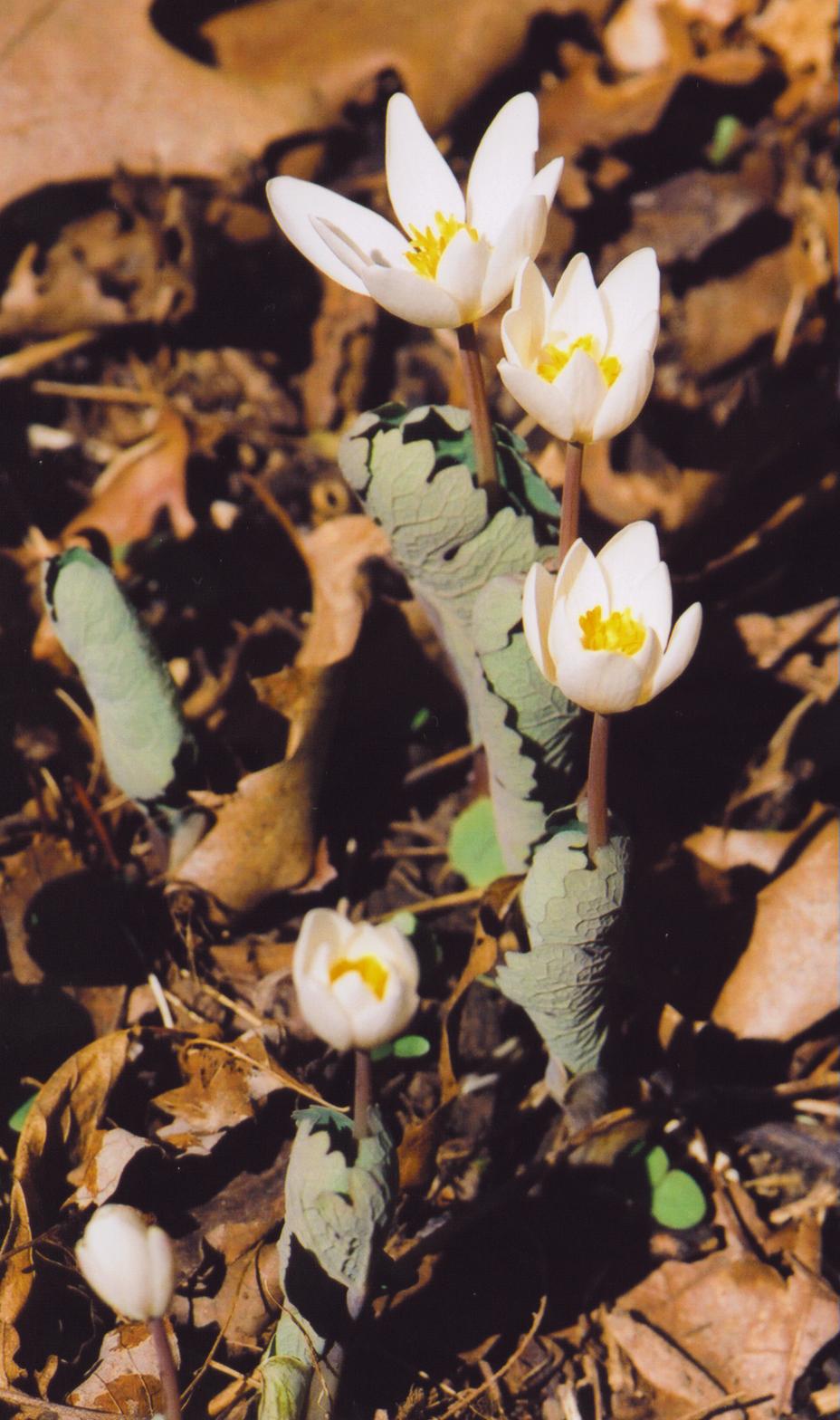
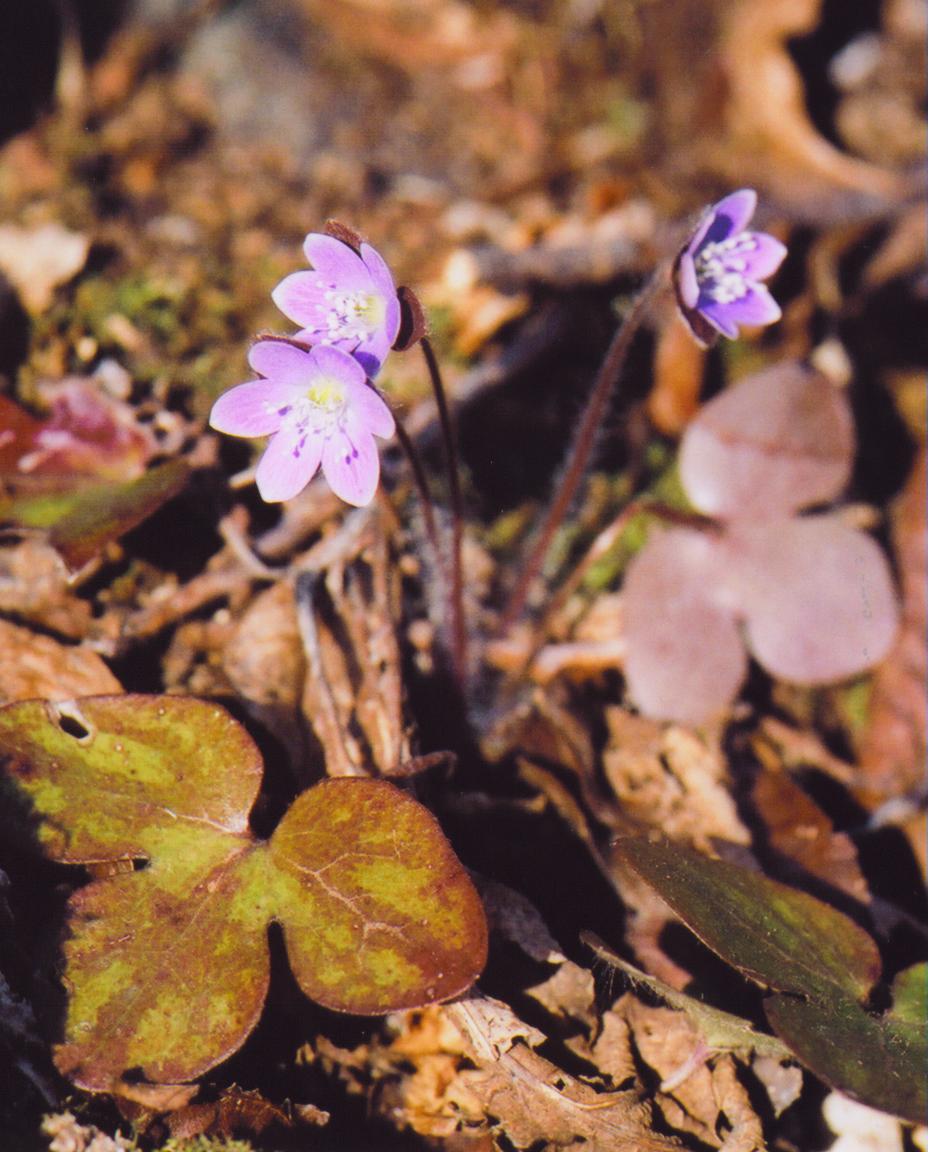
Bloodroot Sanguinaria canadensis 4-15-05 Round-lobed Hepatica Hepatica americana 4-18-05
Around the third or fourth week of April the woodland floor, which has been a dull brown ever since the snows melted, almost miraculously develops large patches of bright green. Most of this is the result of the leaves of Mayflower pushing up and filling out. Others leaves developing now are wood anemone, wild columbine often in cracks on rocks, and on higher drier ground - Pussytoes with its small heads of furry white flowers.
The streams and swampy ground, which saw the first
activities at the beginning of the month, towards the close are
entering
a second phase of development and color. The bright green leaves of
skunk cabbage are now getting very large marking water
courses clearly from a distance. Above them is the gangly shrub
Spicebush
with its bunches of tiny yellow flowers along the
leafless branches catching the sun. And Marsh Marigold, whose
leaves have been developing for some time, blooms. In royal
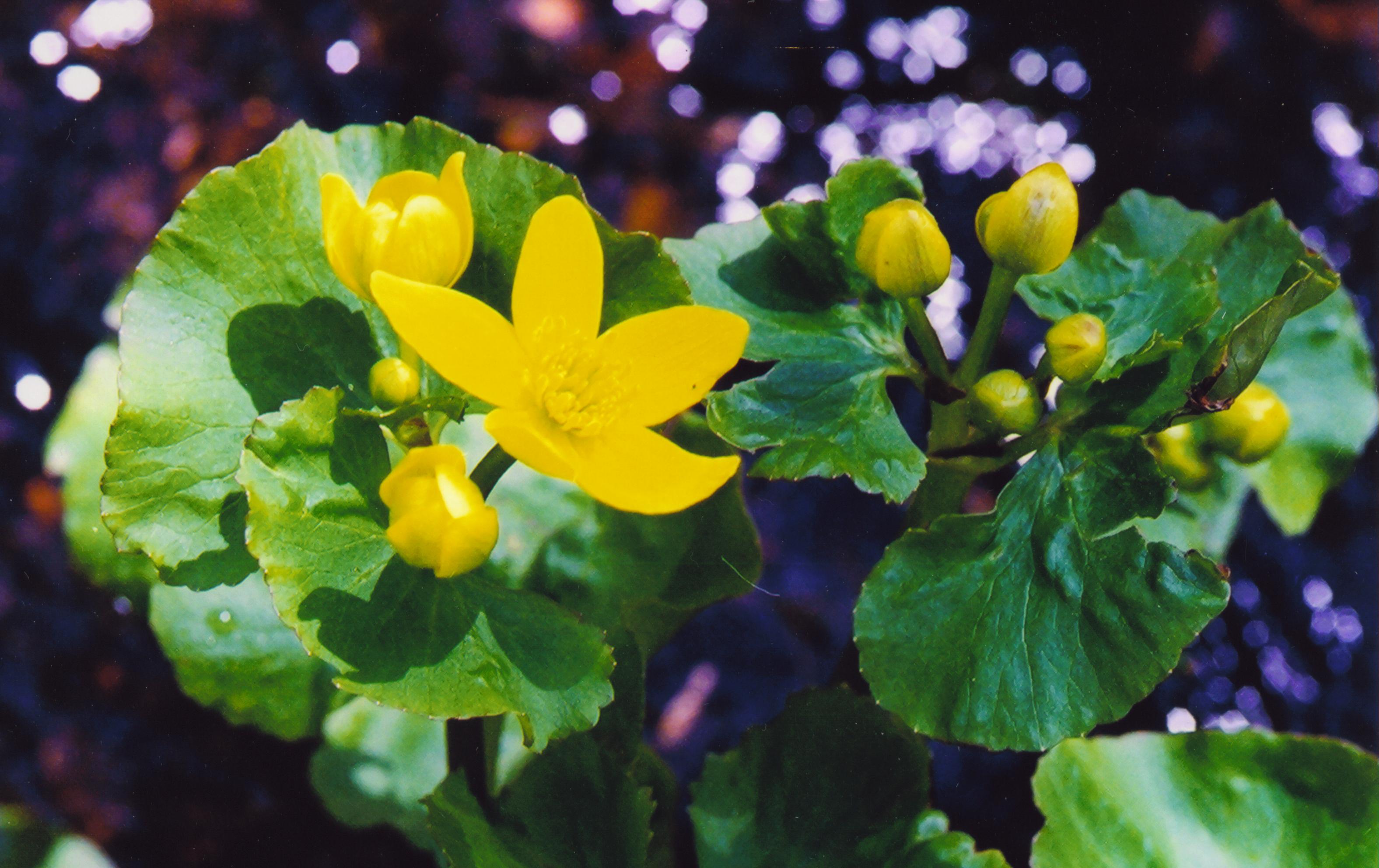
Marsh Marigold Caltha palustris 4-27-03
By the last week of April large patches of
Trout Lilies, with their brown spotted leaves, can be seen at Bellevue
Pond
and at the west end of the blue trail by Whitemore Brook. These
delightful small lilies reflex their yellow petals on sunny
days exposing dark red anthers. See Spring Gallery.
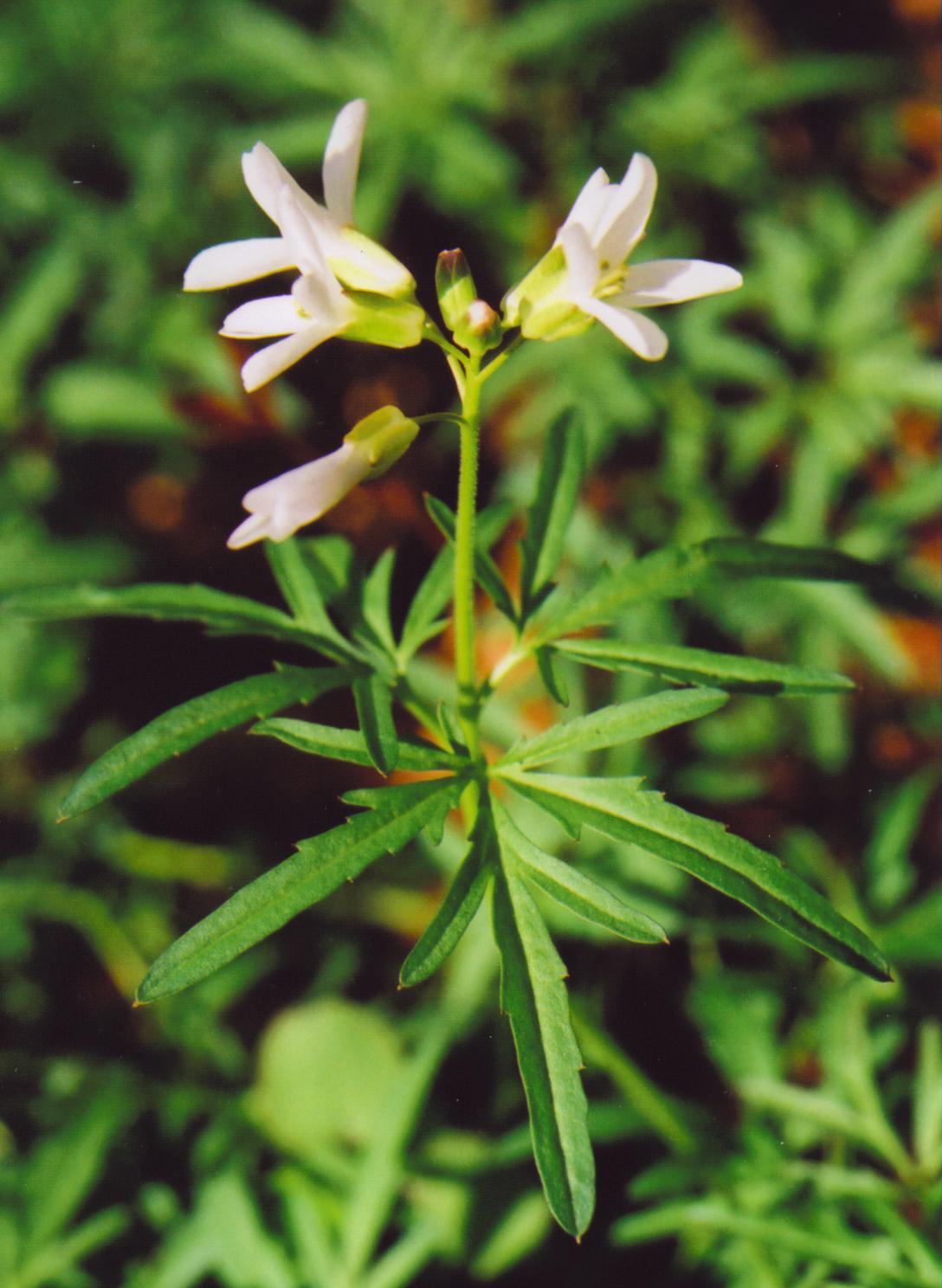
Cut-leaved Toothwort
Cardamine concatenata
4-29-05